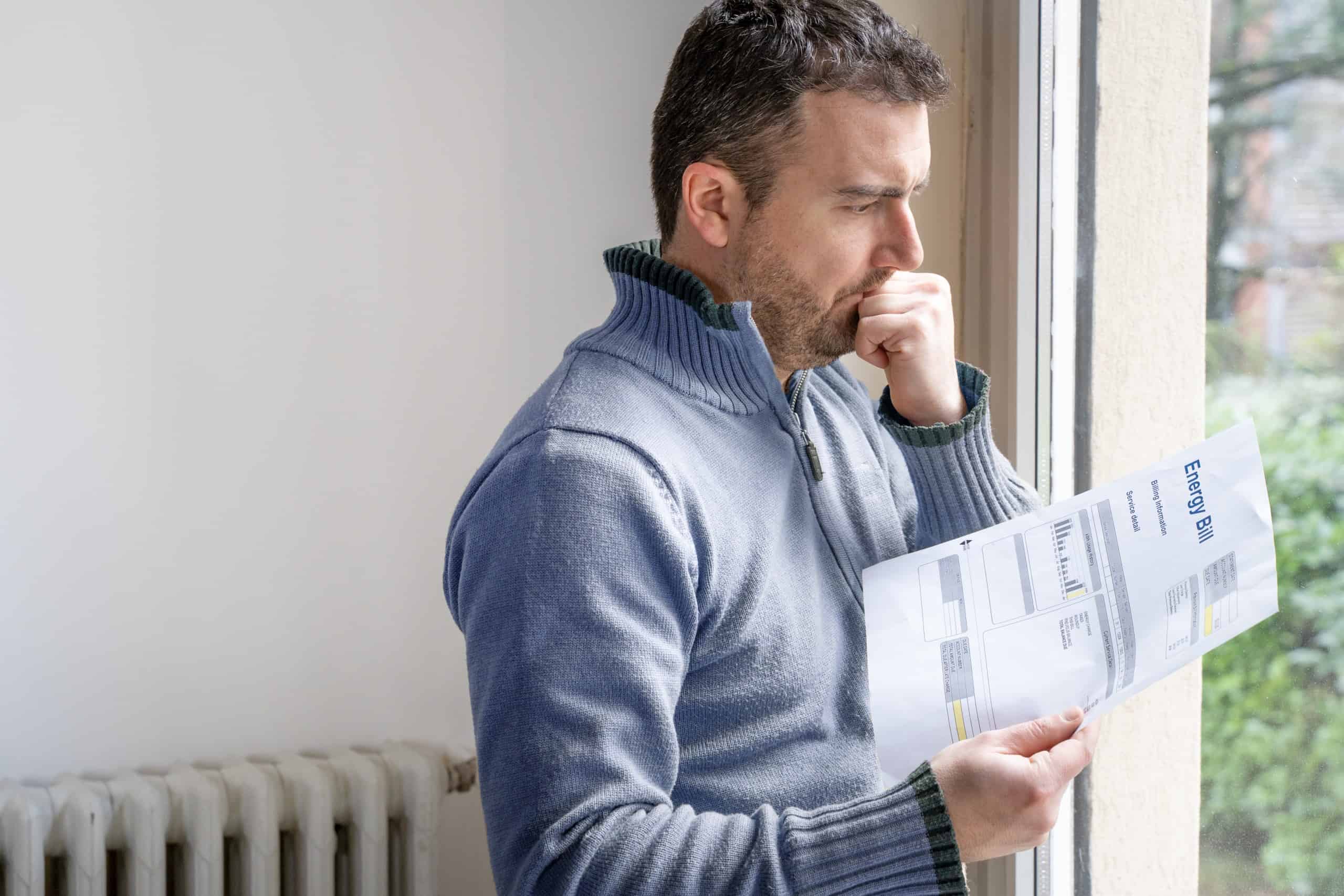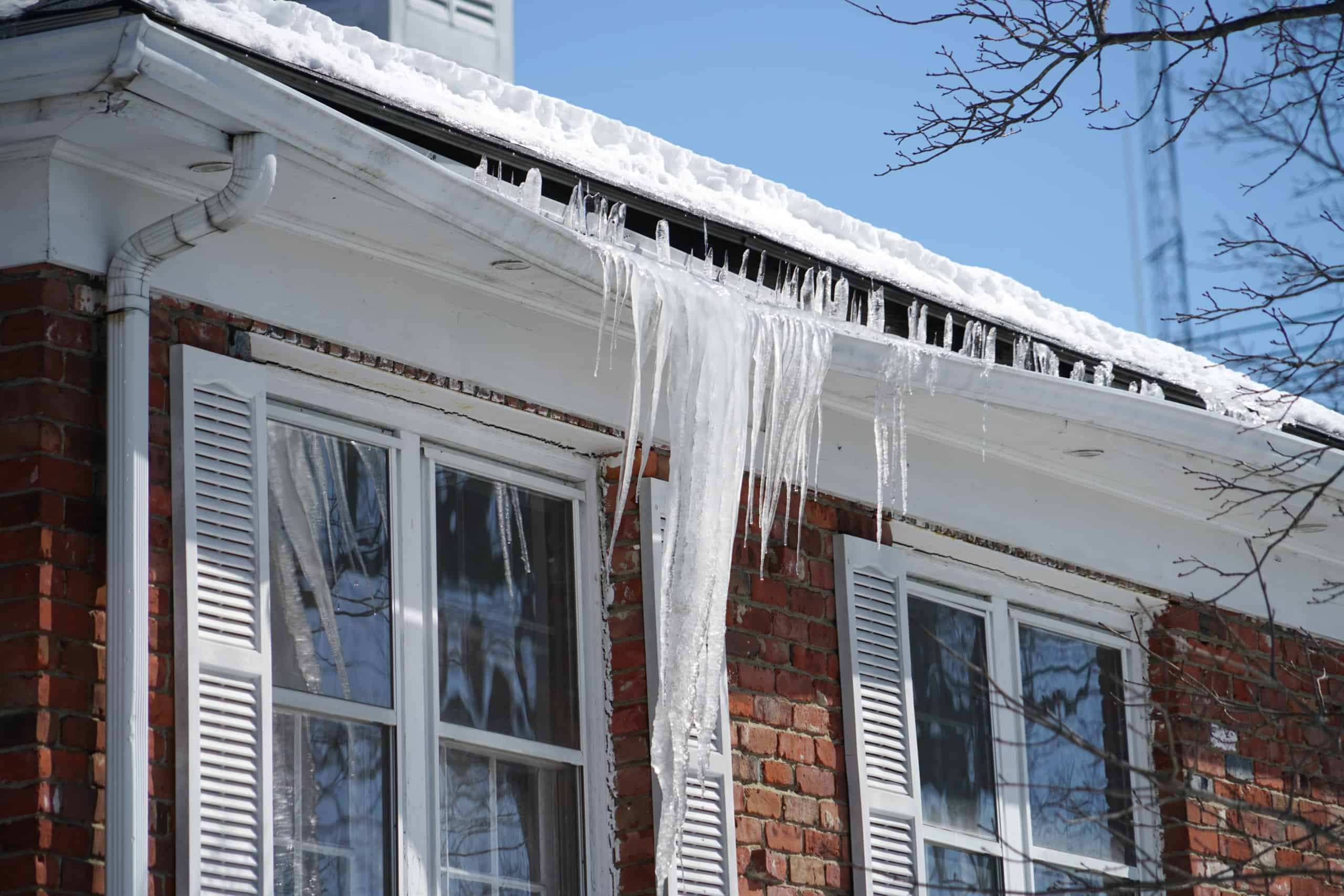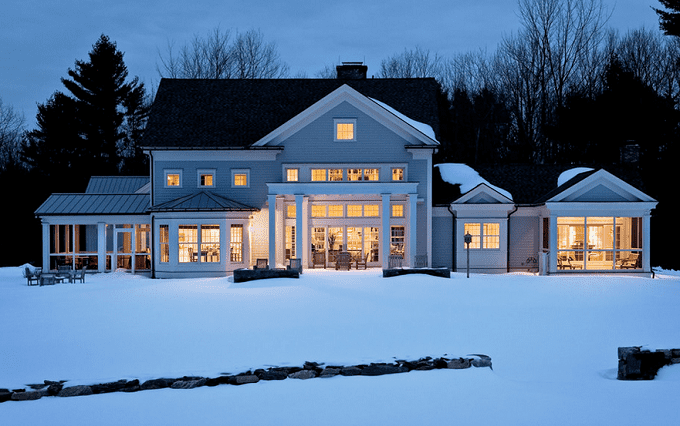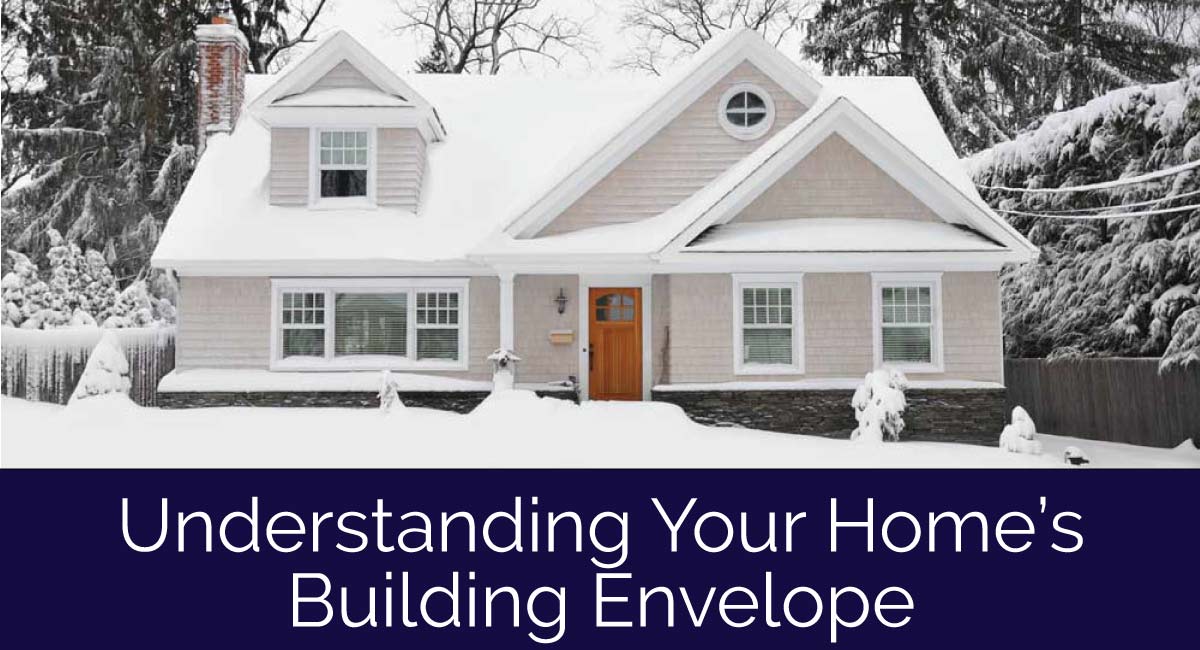
When it comes to preparing your home for winter…
There are two major concepts that sum up everything you need to do.
- Insulating your building envelope
- Ventilating your building envelope
The steps you take to properly insulate and ventilate your home’s building envelope all contribute to your home’s energy efficiency.
What Does It Mean to Be Energy Efficient?
 If you’re thinking about how to save energy at home (a major concern in the winter time), you want to understand what makes your home energy efficient. According to the International Energy Agency, energy efficiency is a way of managing and restraining any growth in the amount of energy you consume.
If you’re thinking about how to save energy at home (a major concern in the winter time), you want to understand what makes your home energy efficient. According to the International Energy Agency, energy efficiency is a way of managing and restraining any growth in the amount of energy you consume.
Being conscious of the amount of energy you consume, and avoiding any wasted energy has many benefits that we’re sure you’re already aware of:
- Decreased monthly heating bills
- Decreased monthly electricity bills
- A more consistent indoor climate in your home
When it comes to preparing your home for winter, your home’s energy efficiency relies on
- Keeping energy flowing where it should be AND
- Stopping energy from leaking and going to waste where it shouldn’t be.
The part of your home that’s responsible for keeping energy where it should be is your home’s building envelope.
What is a Building Envelope?
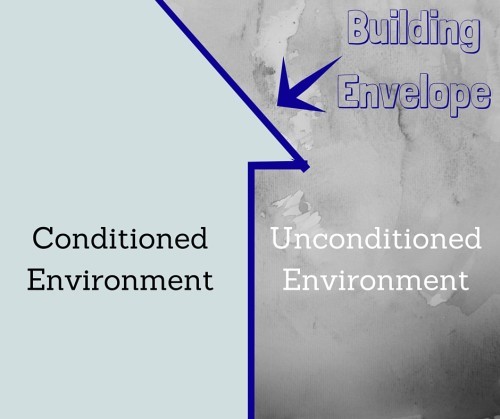 A building envelope is a physical separation between a conditioned environment (such as the inside of your house) from an unconditioned environment (such as the world outside your home).
A building envelope is a physical separation between a conditioned environment (such as the inside of your house) from an unconditioned environment (such as the world outside your home).
Your home’s building envelope is your defense against weather and energy loss.
What Does a Building Envelope Do?
Your roof, walls, siding, insulation, windows, entry doors, and foundation are all a part of your home’s building envelope. They make up the outer shell of your home and contribute to the maintenance of a dry, heated, or cooled indoor environment. Your building envelope facilitates your home’s climate control.
While a building envelope has three main functions…
- To Support your home by resisting and transferring mechanical loads
- To Control the flow of matter and energy in your home
- To Finish your home – the look and feel that appeals to your desires and tastes
When it comes to preparing your home for winter, we’re going to focus on function #2 – controlling the flow of matter and energy in your home. This means we’re going look at how well your roof, walls, siding, insulation, windows, entry doors, and foundation are insulated and sealed to ensure your home is efficiently keeping…
- water, rain – any kind of unwanted moisture – out of your home
- air flowing through – not escaping from your home
- heat inside and the cold outside
How to Check Your Building Envelope
Our Winter Ready Home Guide will help you closely examine the parts of your home’s building envelope that are often lacking in insulation or have damaged seals that would compromise your home’s protection against winter elements (snow, ice, and cold).
Remember, insulation is important because it prevents heat and energy loss from your home. And proper ventilation is important because it keeps energy flowing where it should be and prevents detrimental moisture buildups (ice dams, mold, infestations, and more).
Take a look at this image from Green Building Advisor to quickly understand all the major parts of your home’s building envelope.
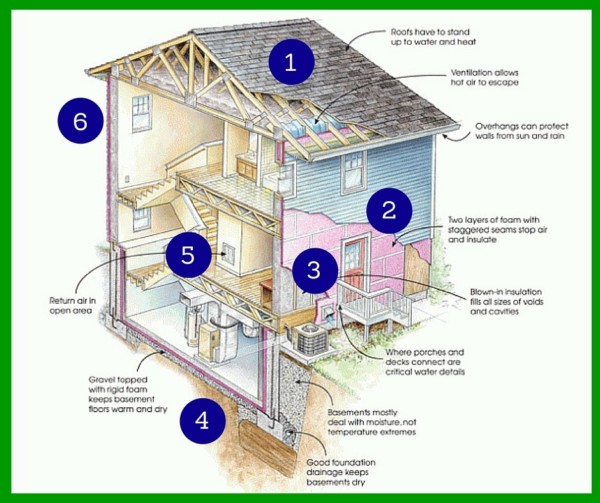
(image credit: Green Building Advisor)
- Your roof needs to withstand snow, water, and ice. It also needs to maintain a temperature consistent with outdoor temperatures to avoid ice dam buildup.
- Your siding is an added layer of insulation for your home and it also blocks moisture from entering your home.
- Any instance where something is connecting to your home’s building envelope must be properly insulated and sealed. Porches, decks, window frames, door frames, and chimneys are some examples of parts that must be properly insulated and sealed into your home’s building envelope.
- Your basement needs proper drainage (“ventilation”) and insulation to ensure moisture will not build up. Beyond flooding, basements are especially prone to mold – which can make a home uninhabitable.
- Review your home’s ventilation and consider the areas you spend the most time in during the winter. Spending money to heat areas you don’t spend time in in the winter equates to waste.
- Old windows are the most common place where energy is lost in a home. If windows aren’t properly insulated, the amount of energy potentially lost through them each year is the same as if you left the window wide open year round.
Looking for a list of actionable Winter Ready Home tips?
Check out our Winter Ready Checklist.

